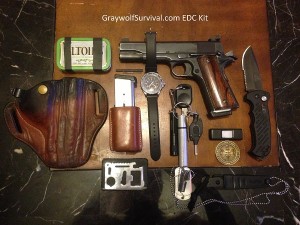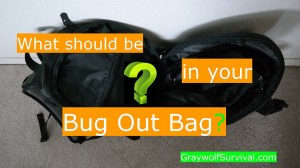 If you’ve read my previous articles, you know that one of my must-have items to keep in your home or pack in your main bugout bag is olive oil.
If you’ve read my previous articles, you know that one of my must-have items to keep in your home or pack in your main bugout bag is olive oil.
Ounce per ounce, it’s hard to beat the amount of calories it packs that can keep you alive in a survival situation (119 calories in each teaspoon) so I always keep a small vial in my kit. In addition, it can be used for many other uses. You can use olive oil to:
- Heal dry skin
- Cook with
- Help with earaches
- Mix with bees wax to make a lip balm
- Use as shaving cream
- Condition leather
- Lubricate machinery and hinges
…and – make an olive oil lamp. Why? Good flashlights are super cheap, but unless you’ve done what I’ve done and come up with a system that allows you to have almost unlimited battery power, you’ll need something else to light things up at night. Plus, you may just find yourself somewhere caught without any flashlights or your go bag.
Because olive oil is pretty safe to keep around due to it’s flash point being about 550 degrees and the fact that it’s so pure that it doesn’t smoke like other fuels usually do. It’s also easy to make if you have olives. In today’s society, olive oil is pretty easy to get a hold of and isn’t too expensive. Extra virgin is healthier but the cheap stuff burns just as good.
But how do you make an olive oil lamp?
Really, all you need is something to hold the oil and have a wick sticking out of it that will soak up the oil and will stand up into the air above it. This can be done by using cotton or similar and taking a wire to either hang the wick in the oil or be used as a stand.
The vessel you use to hold the oil isn’t too important. It just has to be able to hold oil without soaking it up. Anything from a used can of vegetables to a bowl to a jar can be used. Heck, you can even just hollow out an orange. Since the wick is the only thing that burns, you don’t have to worry much about the container catching fire.
For a wick, you just need something that soaks oil and burns. Cotton cut from clothing or pulled from a mop makes a great wick but even paper towels or fiberglass insulation can be used. Even just a piece of paper will work in a pinch. Here’s a quick video how to make an oil lamp using paper towels and an empty tuna can, for example:
If you don’t have wire, you can also put sand in the bottom of your vessel and stick something like a twig or toothpick in it, wrapped in your wicking material.
Of course, if you want to have something around your house in case the lights go out and you want it to look good, you can always just get an inexpensive lamp set to keep in your home in case the power goes out. The nice thing about these as opposed to candles is that they don’t melt in the summertime, like I’ve had happen here in AZ when the power went out.
This is a great little video showing how to make a bunch of “100-hour emergency candles” with shortening and cheap candles.
If you want even more information, check out the Girl’s Guide to Oil Lamps. Good article there.
If you like prepper DIY projects, take a look at these:










Disposable citronella torches (the inserts for ‘tiki torches’) are a good source of free wick material. The burned part can be trimmed off when the oil is gone and you still have 5 or 6 inches of clean wick left. The torches themselves are cheap and hold a fair amount of oil. They’re lousy for lighting purposes; too smoky and inefficient, but broken down the components are a fair value.
Thanks for the advice, but you might consider getting someone to edit your posts.